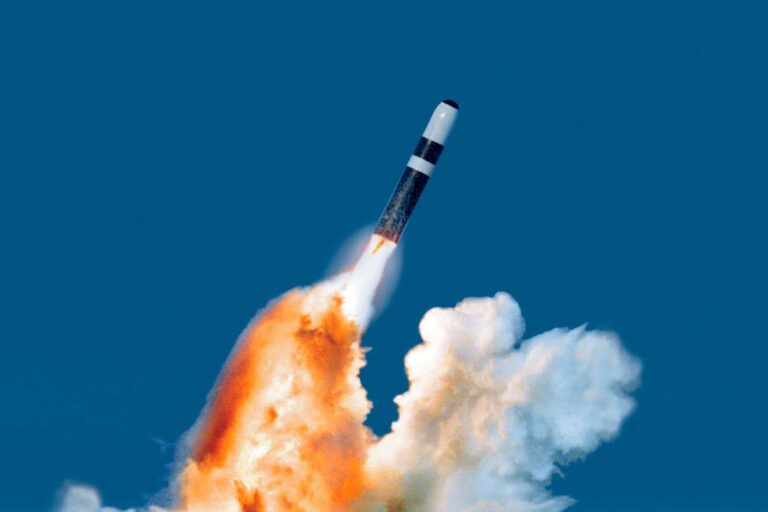Lockheed Martin was awarded a $383 million contract by the US Navy to develop a modernized version of the Trident II nuclear ballistic missile. The program aims to ensure the reliability and effectiveness of strategic deterrence systems deployed on ballistic missile submarines (SSBNs) until 2084. Based on the Polaris Sales Agreement.
Modernization of D5LE2 is attempting to extend operational lifespan while maintaining performance in response to evolving threats (Photo source: Lockheed Martin)
The Trident II D5 currently works on American Ohio Class and British Vanguard Class submarines. Designed and developed by Lockheed Martin, this submarine-launched ballistic missile has a range of over 12,000 km and is capable of carrying multiple independently targetable re-entry vehicles (MIRVs). Until now, Trident II missiles were equipped with W76 and W88 nuclear warheads, but service lifespans over 25 years has sparked concerns about reliability and safety.
The modernization of the D5LE2 is attempting to extend operational lifespan while maintaining performance in response to evolving threats. Upgrades include missile guidance and improved propulsion systems. With three stages of solid fuel propulsion, the Trident II D5 achieves a trajectory designed to avoid rapid acceleration and interception. Its inertial guidance system, enhanced with electronic upgrades, contributes to increased accuracy.
Trident II is also being considered in traditional applications under a rapid global strike programme aimed at providing the US with rapid and nuclear-free strike capabilities. The initiative equips certain Trident missiles with modified re-entry vehicles with GPS navigation and track correction systems, allowing impact accuracy of approximately 10 meters.
However, the proposal generated important international debate, with concerns that such launches could be mistaken for nuclear attacks and could lead to unintended reactions. The program was eventually discontinued, but in 2018 the US administration approved production of the W76-2, a low-yield warhead specially designed for Trident missiles. The development was officially confirmed in 2020, with an early operational integration into USS Tennessee.
To support the production and integration of D5LE2 components, Lockheed Martin has begun construction of a new production facility in Titusville, Florida. Covering approximately 21,000 square meters, the site expands its presence on Space Coast, a major aerospace industry hub. The facility, scheduled to be operational by 2027, is expected to create around 300 highly skilled jobs. Florida officials, represented by Secretary of Commerce, J. Alex Kelly, highlight the economic importance of this investment in strengthening the region’s defense and aerospace industry.
The contract is part of a broader effort to modernize US nuclear weapons. In October 2024, the US Department of Defense announced a $2.1 billion contract for the production and maintenance of the Trident II D5 missile, and a $2.1 billion contract for the development of a new W93 nuclear warhead and its MK7 re-entry vehicle. Awarded to the space. Currently under development at the Los Alamos National Laboratory, these warheads mark the first new US nuclear weapon production initiative in 40 years.
These programs reflect the US and UK’s continued commitment to maintaining technical and strategic capabilities in nuclear deterrence. This year, Lockheed Martin, who has recorded 70 years of collaboration with the US Navy under the Fleet Ballistic Missile Program, continues to play a central role in the evolution of strategic missile systems. With the Trident II D5LE2, both countries ensure the continued reliability and effectiveness of their deterrence stance for decades ahead.


